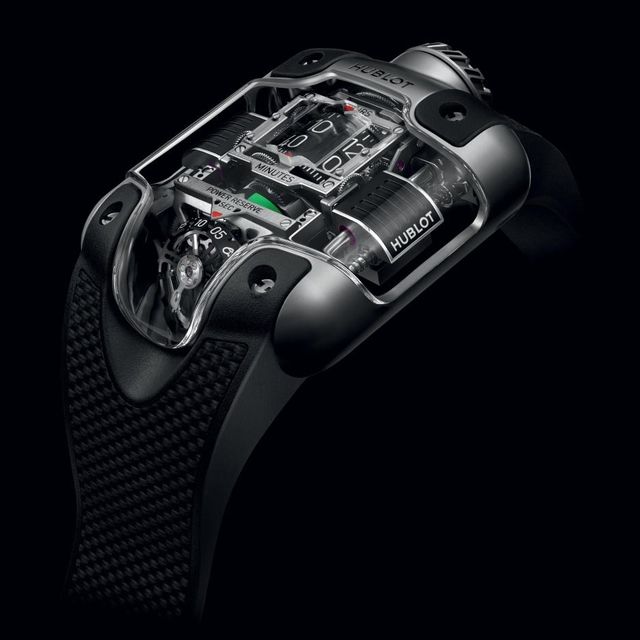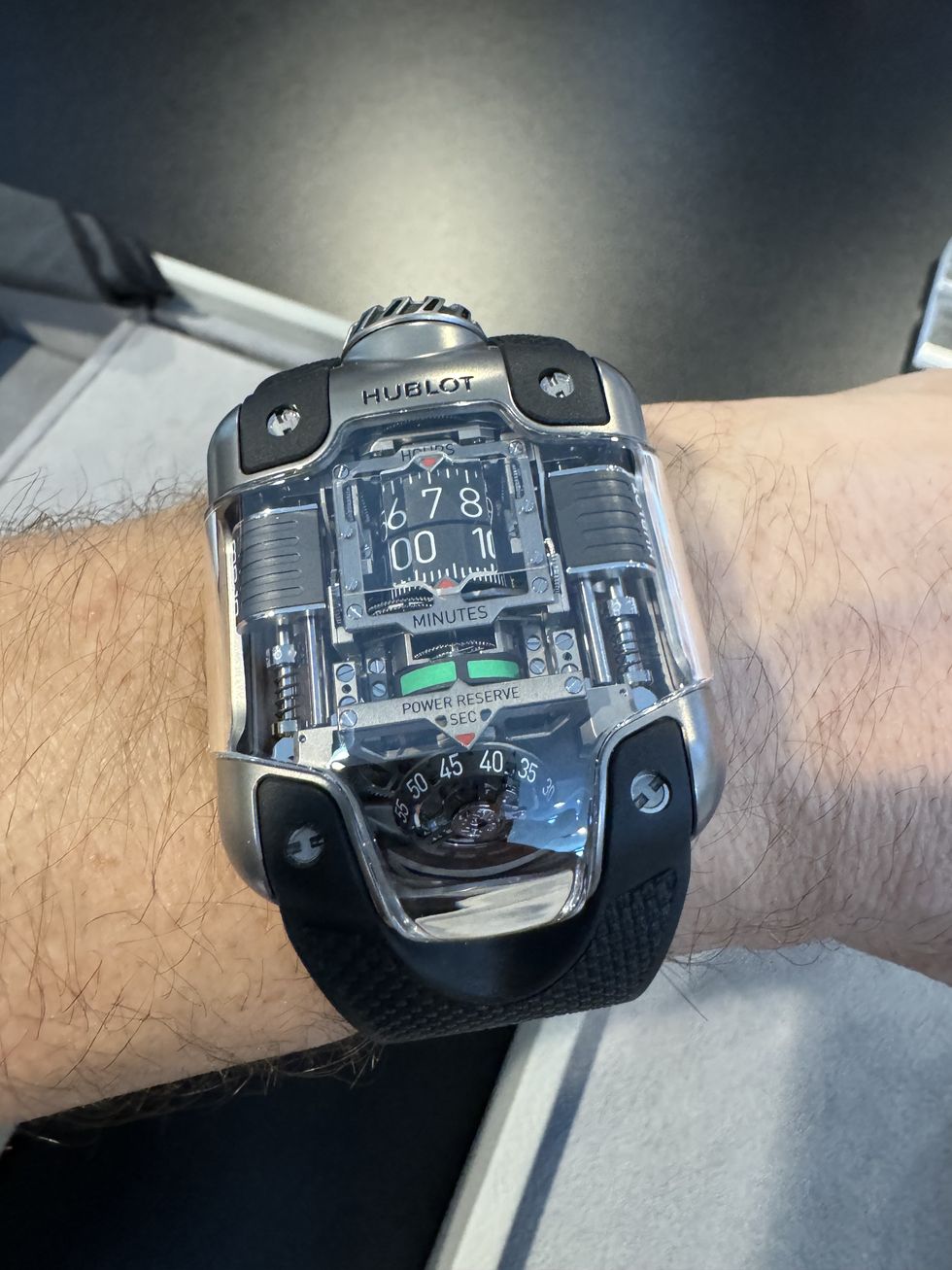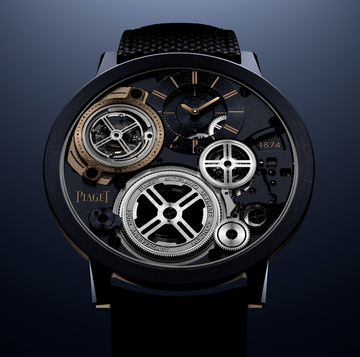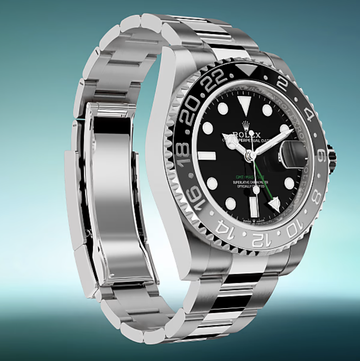One watch brand not short on out-there ideas is Hublot.
Despite closing in on its 45th birthday, it is still regarded as the enfant terrible of the luxury watchmaking biz*. With its Big Bang series, it skilfully blends all kinds of weird and wonderful materials including ceramic, cermet, Kevlar, tungsten, magnesium and rubber into shamelessly hench watches beloved of millionaires and sportsmen, and especially millionaire sportsmen.
It’s MP** series is the place to see its nuttiest creations. For example, 2013’s MP-02 Key of Time came with a one-off mechanism that allowed the wearer to adjust the time to four times faster or four times slower than the rate of actual time passing (Why? It was something to do with being able to control time, the true luxury of our age…).
While 2011’s MP-08 Antikythera Sun Moon paid tribute to the ancient Greek hand-powered model of the solar system, sometimes called the oldest-known example of an analogue computer. Looks-wise these creations have veered heavily towards the steampunk, and they tend to be wildly impractical for actually telling the time.
Hublot just unveiled the latest in the series – the MP-10 Tourbillon Weight Energy System Titanium, a timepiece every bit as unwieldy as its name. (It doesn’t have a dial or hands. You wind it using a pair of tiny sliding white gold weights.)
You’ve got to love that the MP series exists. It’s so barmy you wouldn’t be totally surprised if Hublot announced it had all been dreamed up by a computer squirrelling away in a Swiss bunker while the rest of the company got on with selling its (comparatively) normal watches.
We mention this because Ricardo Guadalupe, Hublot’s CEO, told Esquire he’d recently given the idea of an AI-generated watch some credence.
“It happened three weeks ago,” he said. “We tried to use it in design. We did some experiments. I must say – amazing results.”
If Hublot was to introduce an AI-designed watch, would it make a virtue of it? Or would it hide behind it?
“I don’t know,” Guadalupe said. “It came up with ideas where it incorporated some complications from other brands, where we can see it was inspired by a [avant-garde independent brand] Grubel Forsey, for example. But really – the results were ‘wow!’ Because if you ask a designer in the company to do that, it will cost you a fortune! And that was for free! And it showed me ten or twelve products.”
Happily for the human designers, many were only possible in theory.
“Some of them would be impossible to make. One was a kind of a tourbillon/ minute repeater with an equation of time [complication] – a Big Bang. They put the screws in a different way. This one was impossible to realise. But it’s really interesting. Because even if it’s impossible, it can give you an idea, you know? It was inspirational. I was really surprised.”
If not Hublot, some brand will surely come up with an AI-designed watch, and soon. On Wednesday, the womenswear designer Norma Kamali announced she was teaching an AI system to replicate her design style – “downloading my brain”, she called it – so that when the day comes for her to retire, she won’t have to worry about a successor – a computer will simply carry on with her ideas.
Obviously this is all fairly terrifying and awful for anyone involved in the creative industries in any way at all. But it does make you wonder if a Hans Wilsdorf ‘designed’ Rolex from beyond the grave would make it any more authentic. Or quite what the ghost-in-the-machine of Omega’s founder Louis Brandt would have made of the 21 plastic MoonSwatches currently stealing the limelight from the brand’s more luxurious creations. Quite possibly he’d be spinning in his grave. Under a full Moon.
*Not least by itself.
**It stands for 'masterpiece'.













